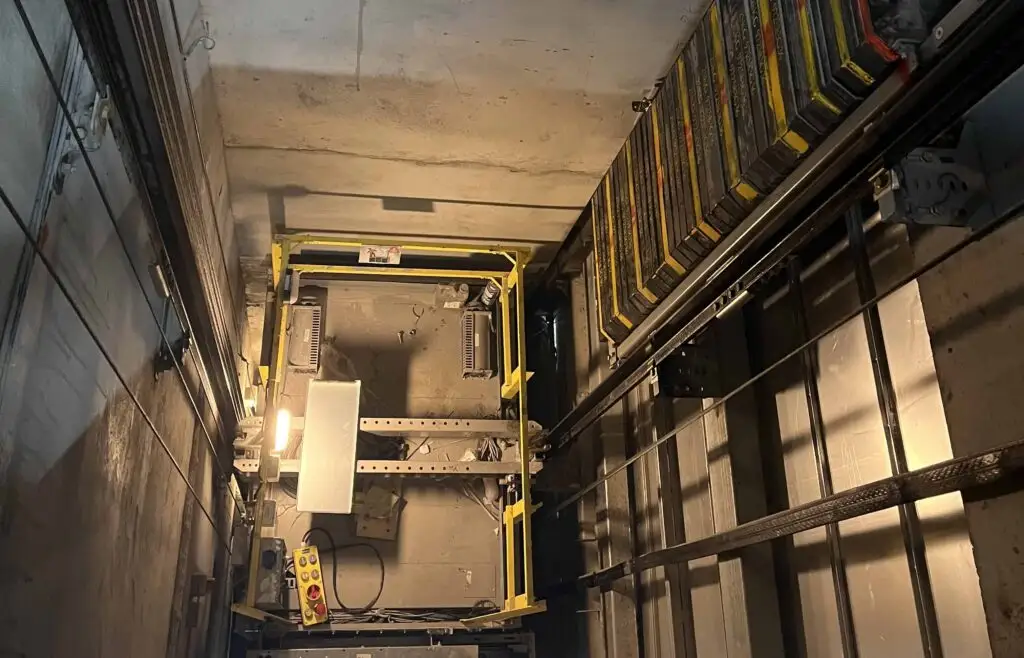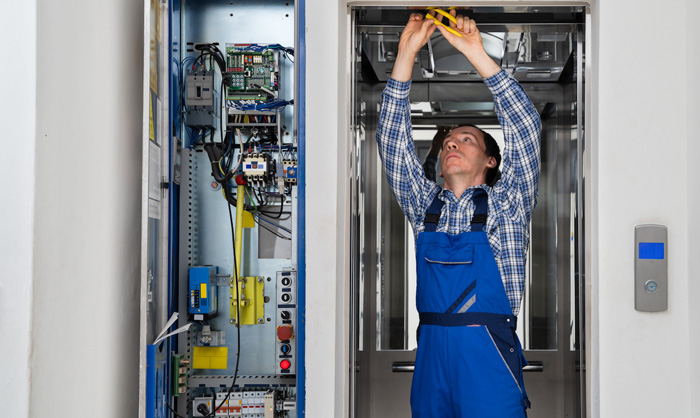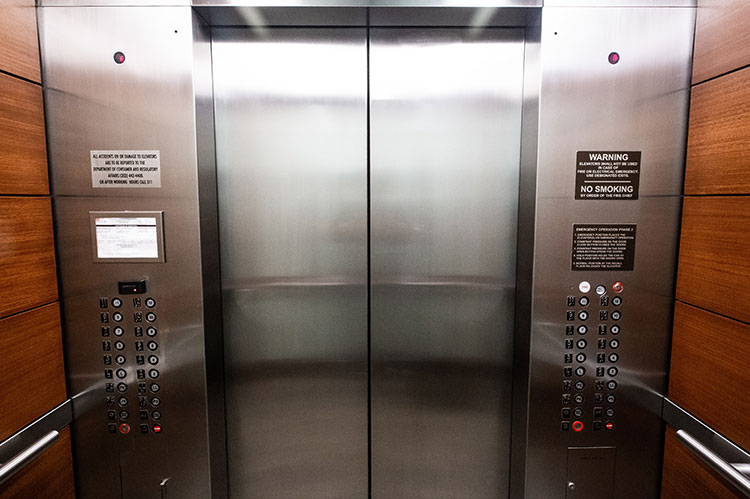Lift Maintenance Repair Specialists: Extend the Life of Your Lifts
Lift Maintenance Repair Specialists: Extend the Life of Your Lifts
Blog Article
Pro Tips for Maintaining Your Lift in Leading Condition: A Detailed Review
Guaranteeing the optimum functioning of a lift system is critical for a efficient and safe procedure in numerous setups, from commercial storehouses to industrial structures. The essential to protecting the durability of these vital devices depends on persistent maintenance techniques and focus to information. By sticking to an organized upkeep program and preemptively attending to prospective problems, lift owners can reduce expensive downtime and safety dangers. In this thorough overview, we will discover important tips and strategies that will certainly aid you promote your lift in peak problem, safeguarding both equipment honesty and functional connection. Lift Maintenance Repair.

Relevance of Routine Upkeep
Routine maintenance of your lift is critical to guarantee its optimal efficiency and longevity. By adhering to a routine maintenance timetable, you can recognize and deal with potential concerns before they intensify right into costly fixings or unexpected downtime. Regular upkeep tasks such as lubricating moving parts, evaluating for wear and tear, and inspecting hydraulic systems can aid prevent malfunctions and make sure secure operation.
Overlooking routine upkeep not just endangers the efficiency of your lift however likewise presents safety and security risks to users and building. Parts that are not appropriately maintained might fail all of a sudden, leading to mishaps or damage to the lift itself. Moreover, attending to issues early with maintenance can expand the lifespan of your lift and reduce the possibility of major malfunctions.
In addition to improving safety and performance, normal upkeep can additionally conserve you cash in the long run. By buying preventive maintenance measures, you can avoid costly repairs or substitutes that might develop from ignoring the upkeep of your lift. In general, prioritizing regular maintenance is important for taking full advantage of the capability and long life of your lift system.
Leading Components to Examine

Additionally, pay attention to the lift's safety attributes, such as emergency stop buttons, security sensors, and interlocking systems, to guarantee they are operating appropriately. Regularly inspect the lift shaft for debris or blockages that can hamper the activity of the lift vehicle. Lastly, do not neglect to check out the doors, joints, and door operators to ensure smooth opening and closing operations. By meticulously evaluating these top components, you can catch potential issues early and ensure your lift continues to be in leading condition.
Proactive Fixing Methods
When confronted with prospective lift system concerns, adopting proactive troubleshooting strategies can substantially enhance operational efficiency and avoid pricey downtime. One of the key proactive fixing methods is to consistently evaluate and keep track of lift performance data. By tracking metrics such as lift speed, motor temperature, and power intake, maintenance teams can recognize early indicators of potential concerns and take corrective actions prior to they rise. Performing regular visual examinations of critical elements, such as cable televisions, pulleys, and safety systems, can additionally help in identifying wear and tear or imbalances that might result in malfunctions. In addition, executing a preventative upkeep timetable that consists of lubrication of moving components, testing of emergency situation brakes, and calibration of sensing units can proactively address common lift system problems.
In addition, spending in training programs for upkeep staff on troubleshooting strategies specific to the lift design set up can equip them to identify and solve issues quickly. By remaining ahead of possible problems with aggressive troubleshooting, lift Lift Maintenance Repair drivers can guarantee a smoother and much more trusted procedure while decreasing the risk of unforeseen malfunctions.
Important Lubrication Practices
Carrying out proper lubrication practices is important for making certain the smooth procedure and long life of lift systems. Regular lubrication helps minimize friction in between moving components, preventing damage that can cause expensive repair services and downtime. When it concerns raise upkeep, adhering to a strict lubrication schedule is crucial.
Choosing the appropriate lubricant is the primary step in effective upkeep. Various parts of the lift system may require specific kinds of lubricating substances, such as oil or oil. Seek advice from the manufacturer's standards to determine the appropriate lubricants for every component.

Attend to any kind of concerns promptly to avoid more damage and make sure the continued smooth procedure of your lift system. By focusing on proper lubrication techniques, you can extend the lifespan of your lift and maximize its performance.
Safety And Security Measures for Lift Operators
In order to maintain a secure functioning setting and maintain functional effectiveness, lift operators have to rigorously stick to suggested safety and security methods, alongside prioritizing essential lubrication techniques for optimum lift efficiency. Precaution for lift drivers are important to avoid accidents and make certain the smooth performance of the lift system. Operators should undertake detailed training on appropriate lift operation, emergency procedures, and security guidelines. Regular devices evaluations and maintenance checks are crucial to identify and deal with any kind of prospective safety dangers without delay. It is essential for operators to constantly comply with supplier recommendations for tons capacities, operational limitations, and security attributes usage.
In addition, lift drivers need to focus on individual protective devices (PPE) such as headgears, handwear covers, and safety belt when working at heights or managing hefty tons. Clear interaction amongst drivers, maintenance professionals, and other workers is important to protect against misunderstandings that might cause mishaps. Finally, drivers ought to remain vigilant, focused, and avoid distractions while running the lift to guarantee the safety of themselves and others in the vicinity.
Verdict
In verdict, preserving a lift in leading problem is vital for ensuring safety and security and performance in operations. Routine upkeep, extensive examinations of vital elements, proactive troubleshooting, appropriate lubrication methods, and adherence to security procedures are necessary for prolonging the life expectancy of the lift and stopping crashes. By following these standards, lift operators can ensure the continued capability and safety and security of their tools.
By adhering to an organized maintenance regimen and preemptively attending to prospective problems, lift proprietors can mitigate pricey downtime and safety hazards. Regularly examine the lift shaft for particles or obstructions that could restrain the motion of the lift car.In order to preserve a risk-free working atmosphere and promote functional efficiency, lift operators must carefully stick to recommended safety and security protocols, together with prioritizing important lubrication techniques for ideal lift efficiency. Safety and security steps for lift operators are vital to avoid mishaps and guarantee the smooth performance of the lift system. Regular upkeep, detailed evaluations of crucial parts, aggressive troubleshooting, correct lubrication practices, and adherence to safety steps are necessary for prolonging the lifespan of the lift and avoiding accidents.
Report this page